Fascinating Aspects of Wireless Electric Bike Charging

- One of the best things about electric bikes- provide instant acceleration
- Electric bikes might seem expensive at first
- On average, electric bikes have a lifespan of 10 years
Electric bikes are one of those vehicles gaining a lot of interest from the past few years. They are incredibly easy to use and provide a healthy solution to the problem of air pollution. Charging is one of the main aspects that customers need to look after when owning an electric vehicle. Charging stations that use cables are the most standard way of charging vehicles nowadays. But wireless charging technologies are being actively developed to charge vehicles easily.

Photo Credit: pixabay.com
What are electric bikes?
Electric bikes are electric vehicles that contain an integrated electric motor that provides propulsion to the bike. Electric bikes fall under three main categories: -
- Electric bikes with "power on demand" or "throttle mode."
- Electric bikes with assistance mode/electric pedal bikes or pedal assistance bikes
- Electric bikes that contain both the "throttle mode" and "assistance mode."

Photo Credit: pixabay.com
Unique wireless charging design
Third- and fourth-year students of the Department of Electrical Engineering and Electronics at KL University in Hyderabad have developed a unique design for an electric bike that features wireless charging technology.
Also Read: Most Expensive Bikes in the World: From Vintage Collectibles to a Sculpture on Wheels - List 2022
Charging features
The wireless charging design that the team at KLU has invented can charge up the whole bike in about 5 hours. The bike's top speed is 55 km/h or 34.18 miles/hour. The battery contains a programmable balancing function along with the newly equipped charging technology.
The new model consists of a brushless DC motor integrated inside the bike. Battery balancing is one of the key components added to the new prototype.

Photo Credit: pixabay.com
The university's contribution
The university provided the main team with Rs. 1,40,000 to establish this idea as a start-up company. The enthusiasm of the faculty provided the students with the motivation to work harder and further develop the model. Alumni members of the esteemed university helped the students along the way.
The university president, Koneru Satyanarayana, stated that the wi-fi-like charging technology developed by the students is a testament to the "revolutionary mindset" and "futuristic strategies" of scholars.
Advantages of wireless charging
- It eliminates the need for long cables that were originally required for the charging purpose and were prone to get damaged.
- Wireless charging is way more convenient than traditional charging methods.
- The risk of oxidation and corrosion of the charging unit is reduced.
- Universal compatibility is a major advantage of wireless charging. Several types of vehicles can be incorporated into a single port.
- Wireless charging is safer than wired charging due to the enclosed environment.
Major issue
One major issue that needs to be fixed is the time. A lot of time is wasted in getting the entire vehicle charged. That needs to be looked into by experts.
If this innovation is scalable on a commercial scale, it certainly can disrupt the two-wheeler market.
Trending News
 1 min readYamaha YZF-R2 Name Trademarked In India
1 min readYamaha YZF-R2 Name Trademarked In India
Latest News
 car&bike Team | Dec 20, 2025KTM 390 Adventure R To Be Launched In January 2026Bookings for the KTM 390 Adventure R are expected to open very soon, wit deliveries beginning in January 2026.2 mins read
car&bike Team | Dec 20, 2025KTM 390 Adventure R To Be Launched In January 2026Bookings for the KTM 390 Adventure R are expected to open very soon, wit deliveries beginning in January 2026.2 mins read car&bike Team | Dec 20, 2025BMW Motorrad India To Hike Prices By Up To 6 Per Cent From 2026The price hike will come into effect from January 1, 2026, and will be across the range of BMW two-wheelers and is due to the rupee’s sharp depreciation.1 min read
car&bike Team | Dec 20, 2025BMW Motorrad India To Hike Prices By Up To 6 Per Cent From 2026The price hike will come into effect from January 1, 2026, and will be across the range of BMW two-wheelers and is due to the rupee’s sharp depreciation.1 min read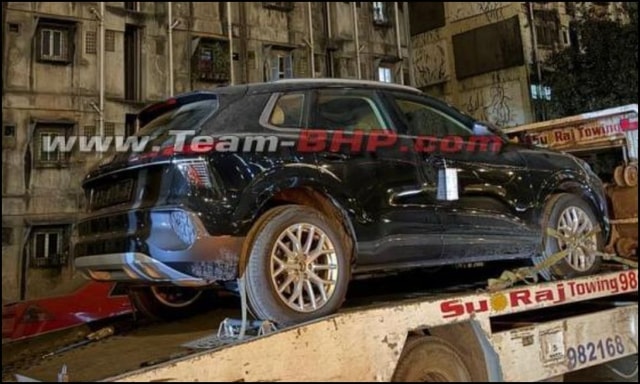 car&bike Team | Dec 19, 2025Next-gen Audi Q3 Spied In India Ahead Of Launch In 2026Third-gen Q3 made its global debut in mid-2025, getting notable tech upgrades and electrified powertrain options.2 mins read
car&bike Team | Dec 19, 2025Next-gen Audi Q3 Spied In India Ahead Of Launch In 2026Third-gen Q3 made its global debut in mid-2025, getting notable tech upgrades and electrified powertrain options.2 mins read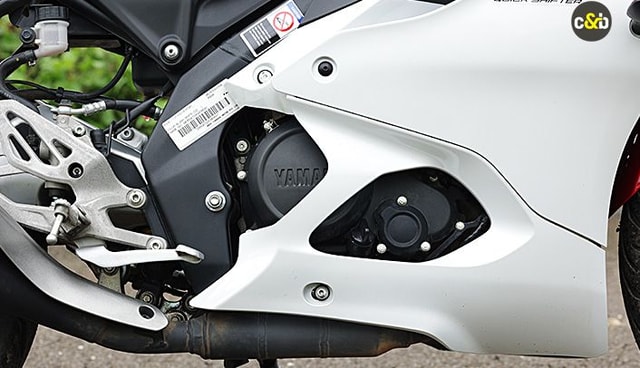 car&bike Team | Dec 19, 2025Yamaha YZF-R2 Name Trademarked In IndiaThe Yamaha R15, one of Yamaha India’s most popular motorcycle models, is likely to continue, even when the R2 finally makes it debut.1 min read
car&bike Team | Dec 19, 2025Yamaha YZF-R2 Name Trademarked In IndiaThe Yamaha R15, one of Yamaha India’s most popular motorcycle models, is likely to continue, even when the R2 finally makes it debut.1 min read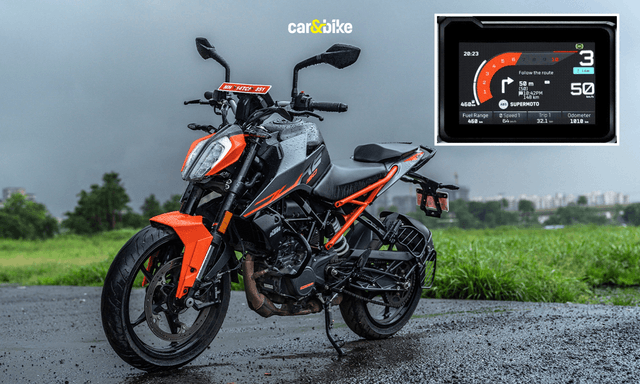 car&bike Team | Dec 18, 2025KTM 160 Duke With TFT Dash launched At Rs 1.79 LakhThe 5-inch colour TFT dash is borrowed from the 390 Duke and is shared across the brand’s sub-400cc lineup.2 mins read
car&bike Team | Dec 18, 2025KTM 160 Duke With TFT Dash launched At Rs 1.79 LakhThe 5-inch colour TFT dash is borrowed from the 390 Duke and is shared across the brand’s sub-400cc lineup.2 mins read car&bike Team | Dec 18, 2025Lamborghini Urus Seized By Cops Following Viral Clip Of Speeding On Bandra-Worli Sea LinkThe car was seized after a video of it allegedly overspeeding on the Bandra–Worli Sea Link, where the speed limit is capped at 80 kmph, went viral.2 mins read
car&bike Team | Dec 18, 2025Lamborghini Urus Seized By Cops Following Viral Clip Of Speeding On Bandra-Worli Sea LinkThe car was seized after a video of it allegedly overspeeding on the Bandra–Worli Sea Link, where the speed limit is capped at 80 kmph, went viral.2 mins read
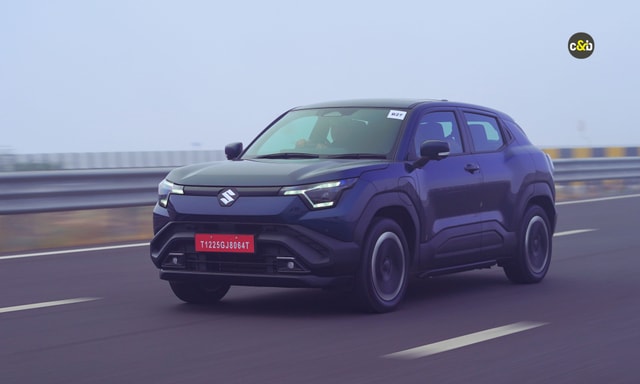 Bilal Firfiray | Dec 19, 2025Maruti Suzuki e-Vitara Review: Worth The Wait?After a long wait, the first-ever electric Maruti Suzuki is here. It’s the e-Vitara, and it comes with a few promises. But arriving this late, is it worth the wait? Or is it a case of too little, too late?9 mins read
Bilal Firfiray | Dec 19, 2025Maruti Suzuki e-Vitara Review: Worth The Wait?After a long wait, the first-ever electric Maruti Suzuki is here. It’s the e-Vitara, and it comes with a few promises. But arriving this late, is it worth the wait? Or is it a case of too little, too late?9 mins read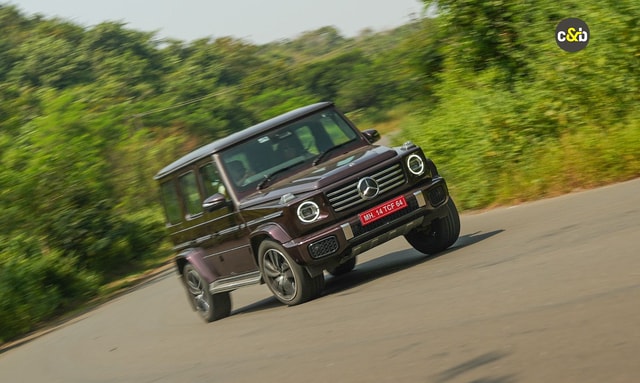 Bilal Firfiray | Dec 18, 2025Mercedes-Benz G450d: The Subtle Power of EvolutionThe Mercedes-Benz G 450d evolves subtly with more power, improved efficiency, and modern tech, while staying true to the timeless G-Class design. And character.4 mins read
Bilal Firfiray | Dec 18, 2025Mercedes-Benz G450d: The Subtle Power of EvolutionThe Mercedes-Benz G 450d evolves subtly with more power, improved efficiency, and modern tech, while staying true to the timeless G-Class design. And character.4 mins read Janak Sorap | Dec 11, 2025Harley-Davidson X440 T First Ride Review: Smarter and SharperHarley-Davidson has taken the X440 and given it a more focused and engaging twist. The result is the X440 T—essentially the same platform but updated in areas that give the motorcycle more appeal and riders more thrill.5 mins read
Janak Sorap | Dec 11, 2025Harley-Davidson X440 T First Ride Review: Smarter and SharperHarley-Davidson has taken the X440 and given it a more focused and engaging twist. The result is the X440 T—essentially the same platform but updated in areas that give the motorcycle more appeal and riders more thrill.5 mins read Shams Raza Naqvi | Dec 10, 20252025 Mini Cooper Convertible Review: More Colour On Indian RoadsThe updated Mini Cooper Convertible is set to be launched in the Indian market in the next few days. We drive it around Jaisalmer for a quick review.5 mins read
Shams Raza Naqvi | Dec 10, 20252025 Mini Cooper Convertible Review: More Colour On Indian RoadsThe updated Mini Cooper Convertible is set to be launched in the Indian market in the next few days. We drive it around Jaisalmer for a quick review.5 mins read Bilal Firfiray | Dec 8, 2025Tata Sierra Review: India’s New Favourite?Marking its return after a few decades, the reborn Sierra has made everyone sit up and take notice. But is it worth the hype?10 mins read
Bilal Firfiray | Dec 8, 2025Tata Sierra Review: India’s New Favourite?Marking its return after a few decades, the reborn Sierra has made everyone sit up and take notice. But is it worth the hype?10 mins read































































































































